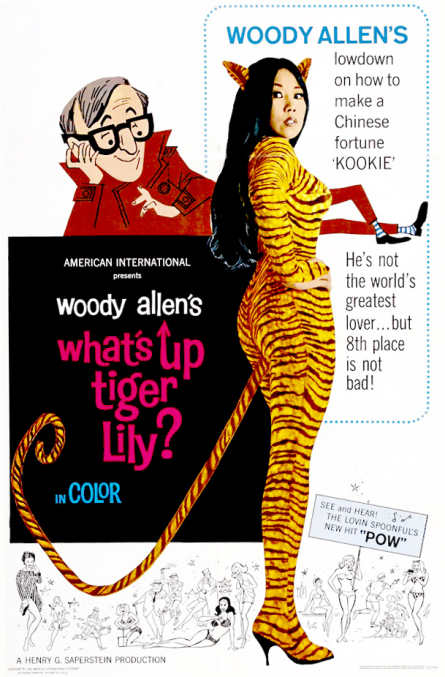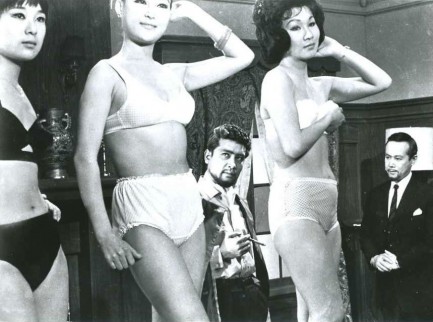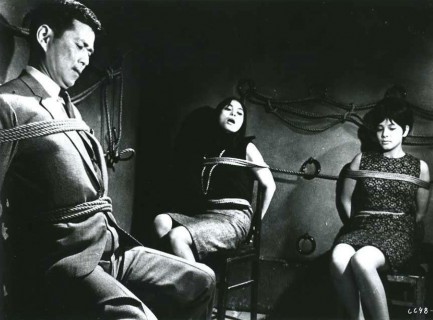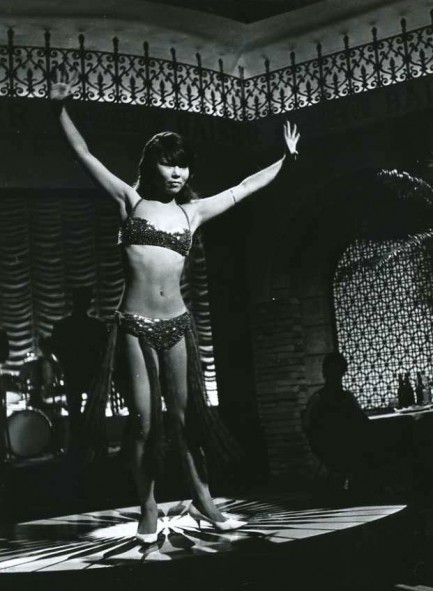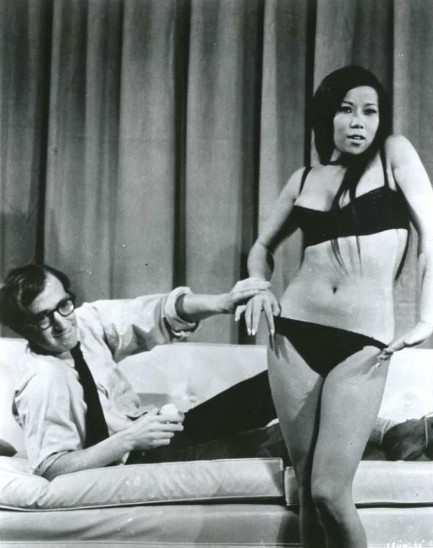 The deeper you go into this casino the wilder it gets. 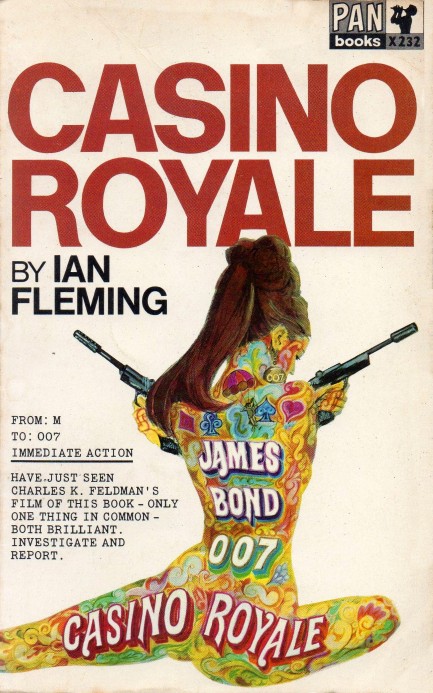 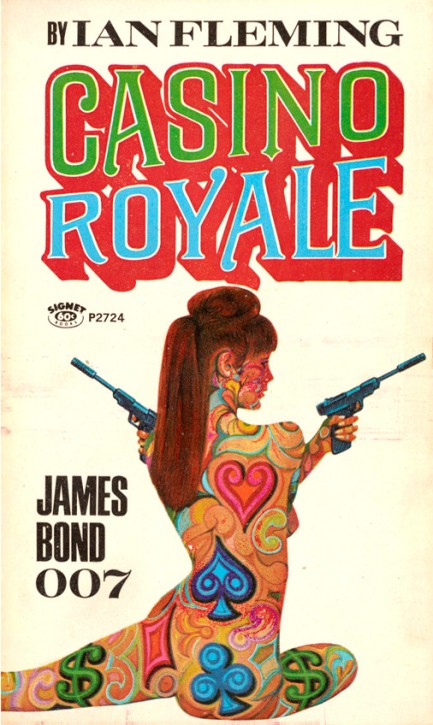
Today we're circling back to James Bond—as we do every so often—to highlight these movie tie-in editions of Ian Fleming's Casino Royale. The movie these are tied into is not the 1963 original with Sean Connery, but the 1967 screwball version with David Niven as Bond and Woody Allen as Bond's nephew Jimmy Bond. If you haven't seen it, just know that it was terribly reviewed, with Time magazine calling it an “an incoherent and vulgar vaudeville.” These covers are derived from the Robert McGinnis Casino Royale movie poster, which is an all-time classic. McGinnis created two versions of the poster—one with text and one without, with the painted patterns on the female figure varying slightly. You see both of those below.
The paperback was published by both Great Pan and Signet, and the cover art was different for the two versions. The Great Pan version at top is McGinnis's unaltered work, but the Signet version just above was painted by an imitator, we're almost certain. We'd hoped to answer this for sure by visiting one of the numerous Bond blogs out there, but none of them have really discussed the difference between the 1967 paperback covers. That leaves it up to us, so we're going to say definitively that the Great Pan version was not painted by McGinnis. Whoever the artist was, they did a nice job channeling the original piece, even if the execution is at a much simpler level.
Moving back to the posters, if you scroll down you'll see that we decided to focus on the details of the textless version to give you a close look at McGinnis's detailed work. The deeper you go the more you see—dice, poker chips, glittery earrings, actor portraits, and more. If you had a huge lithograph of this on your wall and a tab of acid on your tongue, an entire weekend would slip past before you moved again. This is possibly the best work from a paperback and movie artist considered to be a grandmaster, one the greatest ever to put brush to canvas. If anyone out there can tell us for sure who painted the Signet paperback—or whether it is indeed McGinnis—feel free to contact us. 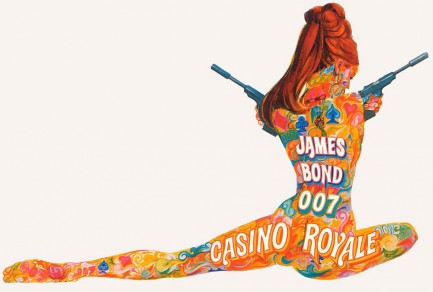  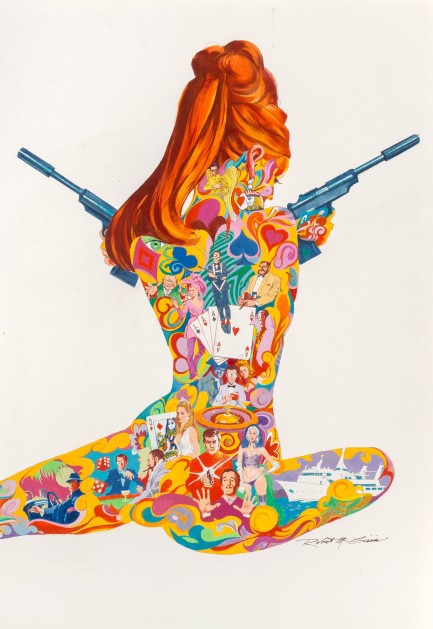 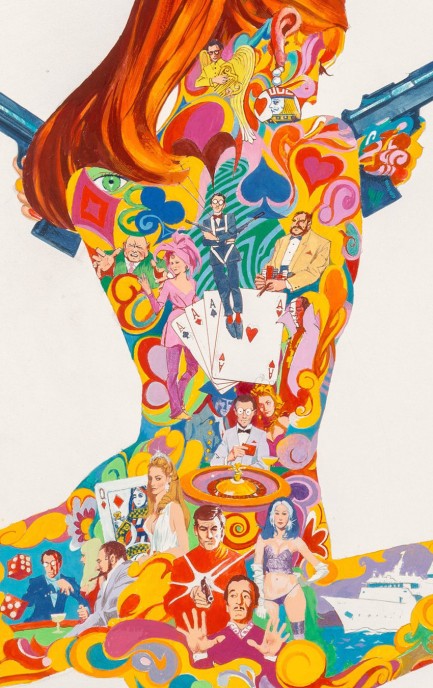
 It’s possible to have too many Bonds. 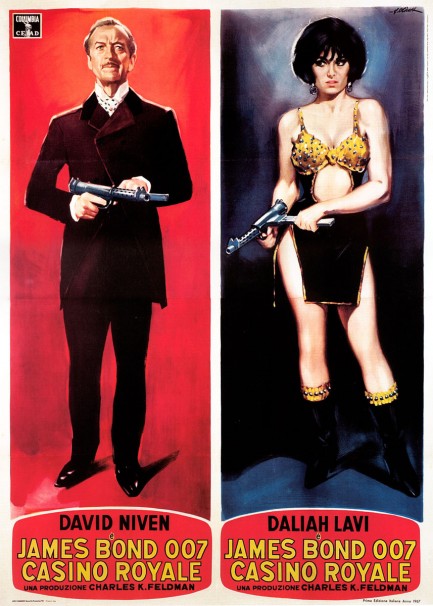 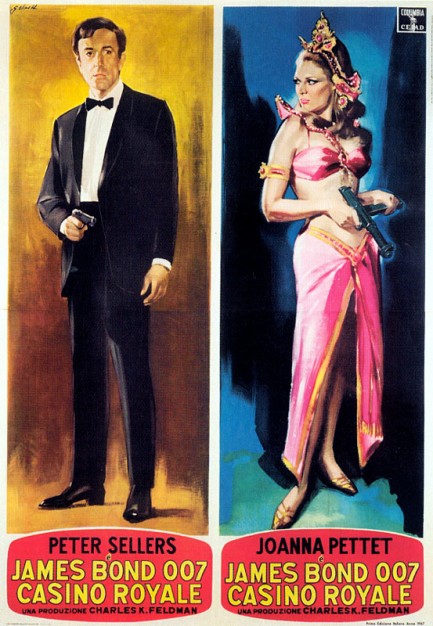 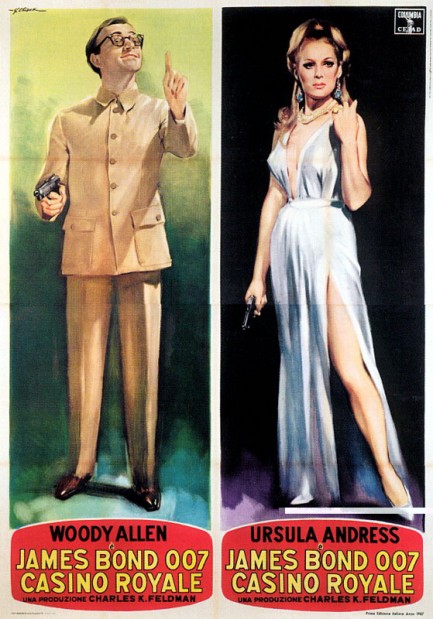
1967’s Casino Royale wasn’t a global Christmas movie in the sense that today’s films are, however it did premiere Christmas week in ten European countries, as well as today in Japan. The movie wasn’t good. Basic idea: Sean Connery is an imposter, so the real James Bond in the form of David Niven is coaxed out of retirement, and he comes up with a plan to confuse his arch enemies SMERSH by renaming all British agents—male and female—James Bond. Time’s review of Casino Royale was headlined “Keystone Cop Out,” and The New York Times’ Bosley Crowther was just as scathing, noting that “since it’s based more on slapstick than wit, with Bond cliché piled upon cliché, it tends to crumble and sprawl.”
But one thing about holiday blockbusters—past and present—is that they’re expensively promoted. The many posters produced to sell Casino Royale were top notch. A U.S. poster painted by the legendary Robert McGinnis remains one of his most iconic pieces, but we also like these Italian quattro foglio promos painted by the extensively and expensively collected Giorgio Olivetti. We saw a set of these asking $8,500 at an auction site. By contrast, below are several U.S. promos, not paintings but photo-illustrations, on which the film’s secondary players get starring roles. They aren’t nearly as collectible as the movie’s paintings, but they’re pretty, so we’re sharing them as well.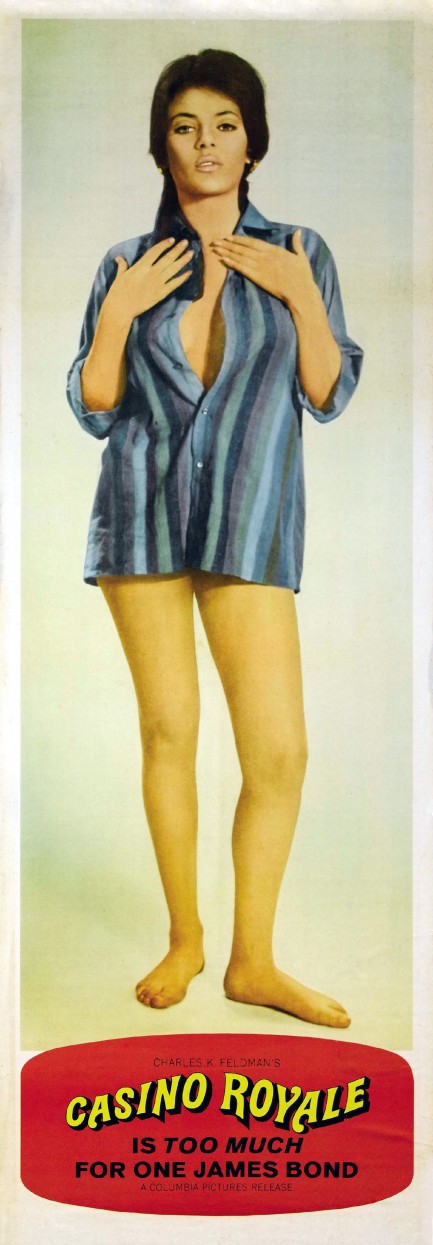 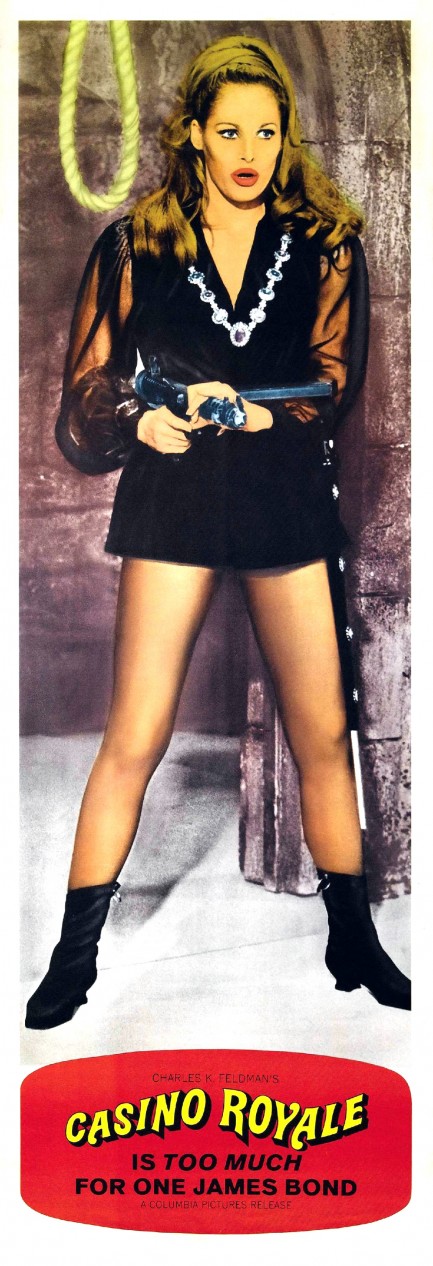 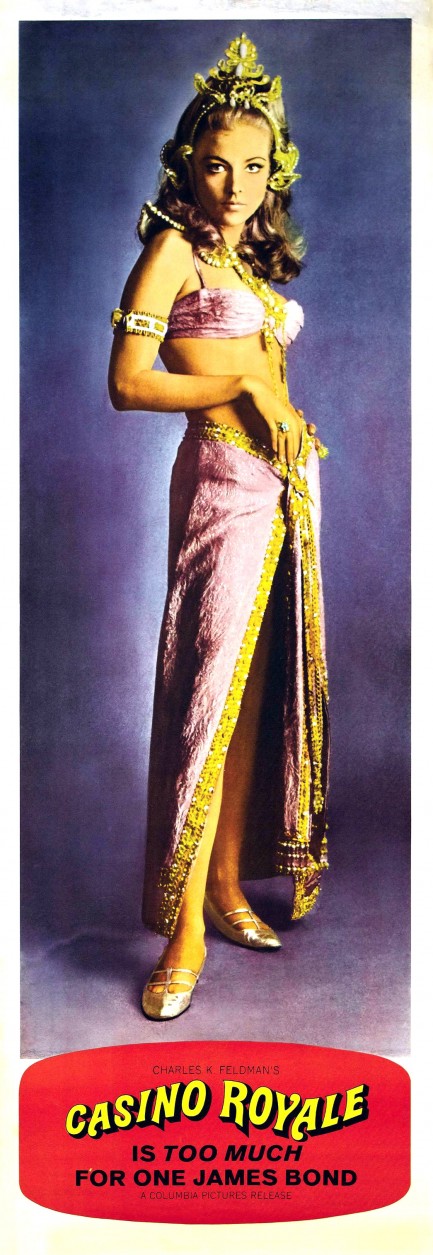 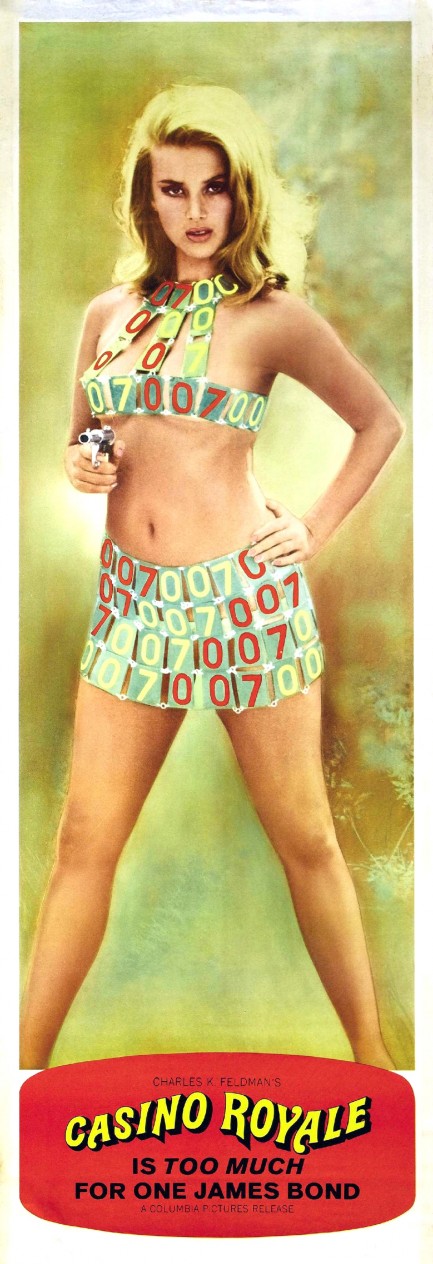 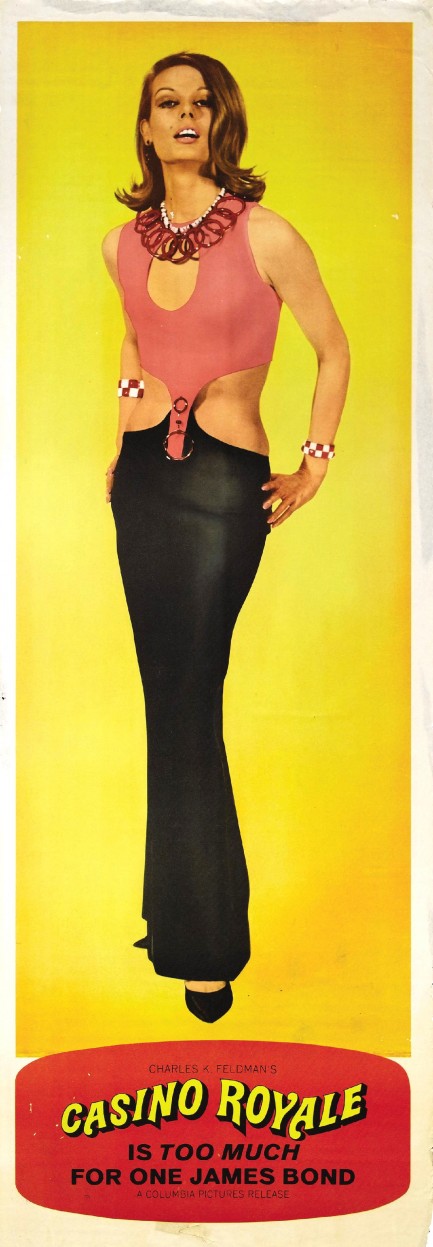 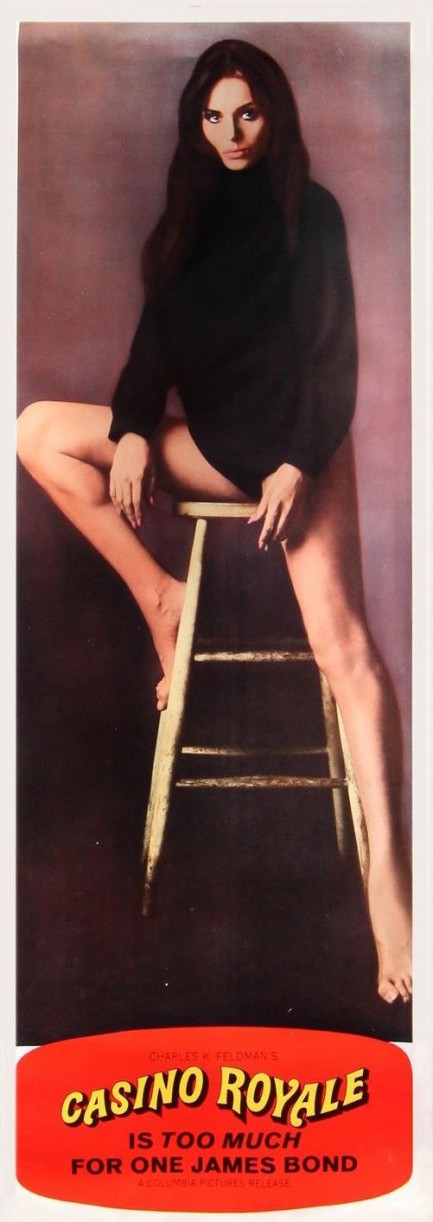
|
 |

The headlines that mattered yesteryear.
1945—Churchill Given the Sack
In spite of admiring Winston Churchill as a great wartime leader, Britons elect
Clement Attlee the nation's new prime minister in a sweeping victory for the Labour Party over the Conservatives. 1952—Evita Peron Dies
Eva Duarte de Peron, aka Evita, wife of the president of the Argentine Republic, dies from cancer at age 33. Evita had brought the working classes into a position of political power never witnessed before, but was hated by the nation's powerful military class. She is lain to rest in Milan, Italy in a secret grave under a nun's name, but is eventually returned to Argentina for reburial beside her husband in 1974. 1943—Mussolini Calls It Quits
Italian dictator Benito Mussolini steps down as head of the armed forces and the government. It soon becomes clear that Il Duce did not relinquish power voluntarily, but was forced to resign after former Fascist colleagues turned against him. He is later installed by Germany as leader of the Italian Social Republic in the north of the country, but is killed by partisans in 1945. 1915—Ship Capsizes on Lake Michigan
During an outing arranged by Western Electric Co. for its employees and their families, the passenger ship Eastland capsizes in Lake Michigan due to unequal weight distribution. 844 people die, including all the members of 22 different families. 1980—Peter Sellers Dies
British movie star Peter Sellers, whose roles in Dr. Strangelove, Being There and the Pink Panther films established him as the greatest comedic actor of his generation, dies of a heart attack at age fifty-four.
|

|
|

It's easy. We have an uploader that makes it a snap. Use it to submit your art, text, header, and subhead. Your post can be funny, serious, or anything in between, as long as it's vintage pulp. You'll get a byline and experience the fleeting pride of free authorship. We'll edit your post for typos, but the rest is up to you. Click here to give us your best shot.

|
|


















